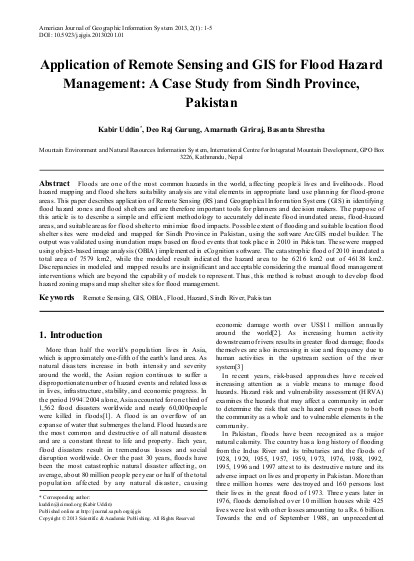
Floods are one of the most common hazards in the world, affecting people’s lives and livelihoods. Flood hazard mapping and flood shelters suitability analysis are vital elements in appropriate land use planning for flood-prone areas. This paper describes application of Remote Sensing (RS) and Geographical Information Systems (GIS) in identifying flood hazard zones and flood shelters and are therefore important tools for planners and decision makers. The purpose of this article is to describe a simple and efficient methodology to accurately delineate flood inundated areas, flood-hazard areas, and suitable areas for flood shelter to minimize flood impacts. Possible extent of flooding and suitable location flood shelter sites were modeled and mapped for Sindh Province in Pakistan, using the software ArcGIS model builder. The output was validated using inundation maps based on flood events that took place in 2010 in Pakistan. These were mapped using object-based image analysis (OBIA) implemented in eCognition software. The catastrophic flood of 2010 inundated a total area of 7579 km2, while the modeled result indicated the hazard area to be 6216 km2 out of 46138 km2. Discrepancies in modeled and mapped results are insignificant and acceptable considering the manual flood management interventions which are beyond the capability of models to represent. Thus, this method is robust enough to develop flood hazard zoning maps and map shelter sites for flood management.